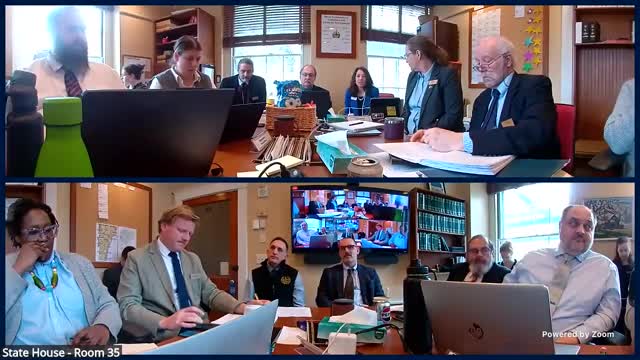Burlington CTE program adapts to multiple locations enhancing student opportunities
March 22, 2025 | Commerce & Economic Development, HOUSE OF REPRESENTATIVES, Committees, Legislative , Vermont
This article was created by AI summarizing key points discussed. AI makes mistakes, so for full details and context, please refer to the video of the full meeting. Please report any errors so we can fix them. Report an error »

The recent House Commerce meeting in Vermont highlighted significant challenges and opportunities within the state's Career and Technical Education (CTE) programs. As educators adapt to operating across multiple locations, they are discovering both the difficulties and potential benefits of this new model.
One of the primary concerns discussed was the logistical challenge of providing adequate support to students who are now spread across various sites. Educators noted that maintaining the same level of support—such as access to school counselors and special education services—has become increasingly difficult. The need for a cohesive support system is critical, especially as students transition to different learning environments.
Despite these challenges, there is optimism surrounding the new CTE facility located at the airport. This site offers students unique opportunities to engage with industries such as aviation and advanced manufacturing. Educators shared inspiring stories of students participating in hands-on experiences, such as operating real aircraft, which can energize their visions for future careers. This proximity to industry not only enhances learning but also helps students envision pathways into the workforce or higher education.
However, the meeting also revealed concerns about enrollment in certain programs. While some areas, particularly in healthcare, are seeing high demand, others are struggling to attract students. Educators emphasized the importance of understanding these trends to ensure that resources are allocated effectively and that underenrolled programs do not become a financial burden.
The discussion concluded with a focus on the need for stability in leadership and location to foster a more effective learning environment. As the CTE programs continue to evolve, the commitment to providing quality education and support for all students remains a top priority. The insights shared during the meeting will guide future efforts to enhance CTE offerings and better serve the community's educational needs.
One of the primary concerns discussed was the logistical challenge of providing adequate support to students who are now spread across various sites. Educators noted that maintaining the same level of support—such as access to school counselors and special education services—has become increasingly difficult. The need for a cohesive support system is critical, especially as students transition to different learning environments.
Despite these challenges, there is optimism surrounding the new CTE facility located at the airport. This site offers students unique opportunities to engage with industries such as aviation and advanced manufacturing. Educators shared inspiring stories of students participating in hands-on experiences, such as operating real aircraft, which can energize their visions for future careers. This proximity to industry not only enhances learning but also helps students envision pathways into the workforce or higher education.
However, the meeting also revealed concerns about enrollment in certain programs. While some areas, particularly in healthcare, are seeing high demand, others are struggling to attract students. Educators emphasized the importance of understanding these trends to ensure that resources are allocated effectively and that underenrolled programs do not become a financial burden.
The discussion concluded with a focus on the need for stability in leadership and location to foster a more effective learning environment. As the CTE programs continue to evolve, the commitment to providing quality education and support for all students remains a top priority. The insights shared during the meeting will guide future efforts to enhance CTE offerings and better serve the community's educational needs.
View full meeting
This article is based on a recent meeting—watch the full video and explore the complete transcript for deeper insights into the discussion.
View full meeting